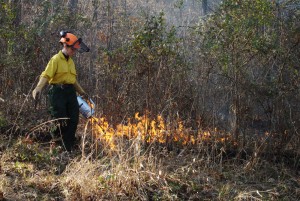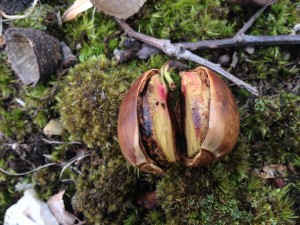Many of us are aware of the devastating wildfires that occur in the western section of the United States. These wildfires occur largely because of years of fire suppression that occurred in a misguided attempt to protect land and communities. This suppression led to a buildup of fuels and overcrowding of stands that historically were not as dense thanks to natural low intensity fire occurrence. Because of this buildup, when a natural fire or a human caused fire occurs there is now a rapid spread of fire up into the crowns of trees. This causes large scale spread and burning throughout entire stands. These effects are devastating and very easy to recognize. What many people are not aware of though, are the effects that have been happening in the central hardwood region as a result of decades of fire suppression. Although we don’t see effects that are quite as catastrophic as entire forest stands going up in flame, there is a slower force of negative change at work here. The central hardwoods in Southern Illinois and surrounding areas have historically been predominately oak and hickory forests. These forests would have naturally occurring low scale fires every 5-20 years depending on the specific ecosystem location and vegetative community. In addition to natural fires, Native Americans were the first land stewards in this area and used low scale fire as a tool for hunting and land management. Since fire has been taken off of the landscape for more than a century in many areas, there is a phenomenon happening that is called mesophytic encroachment. Oak and hickory cannot easily regenerate without light and somewhat xeric soils. On the other hand, maple and beech can easily flourish in areas without much light and prefer mesic and wetter soils. Most maple species and beech are considered to be more Eastern species. Although they have their place here in the landscape in bottomlands and north facing slopes, they are becoming a problem by flourishing in the under and midstory of areas that should be predominantly oak and hickory. Because of the overshading they create and the density mesic species can grow at, oak and hickory are not able to regenerate and compete with these more mesic species as they quickly grow and take over. Not only does this affect forest  composition, it affects our ability to grow timber, our wildlife, our soils, and the ecosystem in general. Oak and hickory are mast producing species and provide food to many of our native wildlife species. As non-mast producing maple and beech takeover, mesophication poses a threat and negatively impacts the wildlife populations of the central hardwoods. In addition to thinning through timber stand improvements, our best option to slow the spread of mesic species and to help the regeneration of oak and hickory species is prescribed fire. Low scale prescribed fires when applied correctly will help to keep fuels at a reasonable level while also keeping maple, beech, and other mesic species in check. Fire will also help cycle nutrients and expose mineral soil to acorns, allowing for oak seedlings to germinate and prosper with increased light levels. Mesophication is becoming a serious issue; if we hope to preserve the legacy of the central hardwood oak and hickory forests we need to start using prescribed fire as a widespread management tool.
composition, it affects our ability to grow timber, our wildlife, our soils, and the ecosystem in general. Oak and hickory are mast producing species and provide food to many of our native wildlife species. As non-mast producing maple and beech takeover, mesophication poses a threat and negatively impacts the wildlife populations of the central hardwoods. In addition to thinning through timber stand improvements, our best option to slow the spread of mesic species and to help the regeneration of oak and hickory species is prescribed fire. Low scale prescribed fires when applied correctly will help to keep fuels at a reasonable level while also keeping maple, beech, and other mesic species in check. Fire will also help cycle nutrients and expose mineral soil to acorns, allowing for oak seedlings to germinate and prosper with increased light levels. Mesophication is becoming a serious issue; if we hope to preserve the legacy of the central hardwood oak and hickory forests we need to start using prescribed fire as a widespread management tool.
written by: Eileen Eck, OKES

